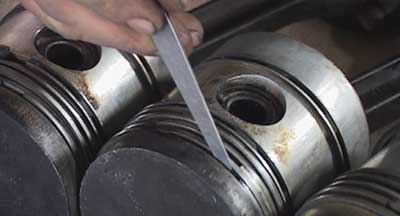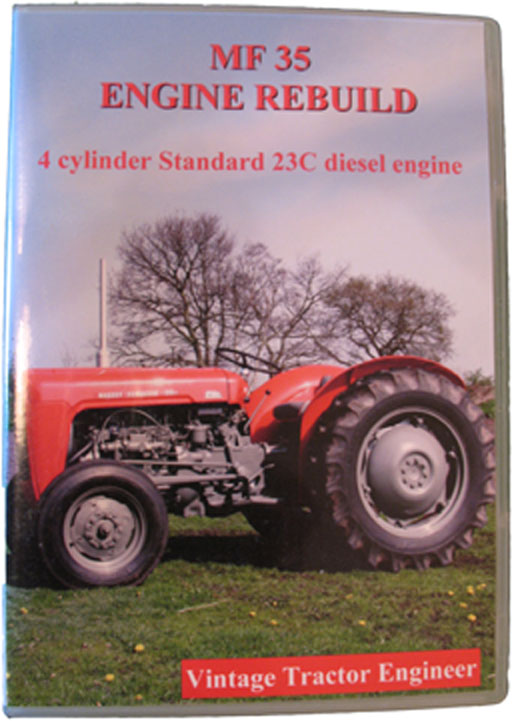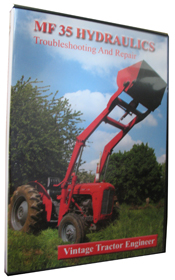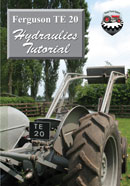Want to check out our tractor maintenance videos? Click here to see what we've got!
The life of the oil pump can be extended by adhering to the recommended engine oil change frequency. The engine oil and filter should normally be changed every 200 hours. If the filter element becomes clogged before it is changed, then pressure will build up in the inlet port which will open the spring loaded by-pass valve (set at between 13 and 17psi) letting unfiltered oil reach the engine. When replacing the filter be sure to thoroughly clean the filter body and replace the rubber sealing ring before filling with oil and tightening the filter centre-bolt to 10lbs. ft. torque.
Inspecting The Oil Pump
The oil pump delivers 5.35 gallons per minute at an engine speed of 2000rpm and the maximun oil pressure is controlled by a relief valve set at 50-65psi. The relief valve can be checked using hydraulic test equipment or compressed air. The following points should be checked if the oil pressure is not operating at normal levels.
- Engine oil level
- Blocked sump filter
- Wrong grade of oil
- Oil pump suction or delivery hoses loose
- Incorrect oil pressure relief valve setting or faulty valve
- Excessive main or big end bearing clearances
If the above potential reasons for low oil pressure have been ruled out then the condition of the oil pump should be assessed. Firstly, after removing and cleaning the oil pump, check for any cracks, scoring or scratches. If there are no obvious problems then we can undertake some measurement to assess the pump.
- With the drive rotor and the driven rotor installed in the pump body (chamfered edge of the outer rotor should enter the pump body first), use a feeler guage to measure the clearances between the rotors at all points. If the clearance exceeds 0.006in then replace both of the rotors. The rotors must be replaced as a matched pair, do not replace just one of the rotors.
- Check the clearance between the driven (outer) rotor and the pump body. This figure should not exceed 0.010in, otherwise the rotors (both) and the pump body should be replaced.
- Assess end float of rotors. Lay a straight edge over the surface of the pump body to bridge across the top of the rotors and then measure the gap with a feeler guage. A gap exceeding 0.003in indicates the necessity to replace both the pump body and the rotors.





